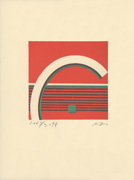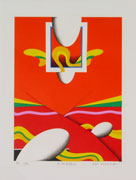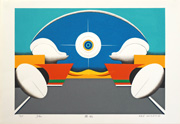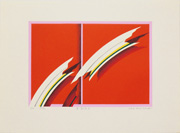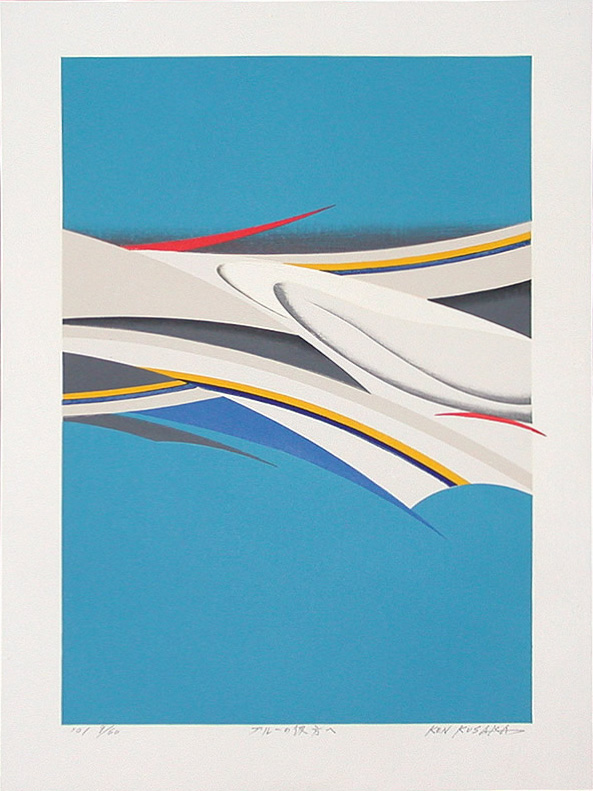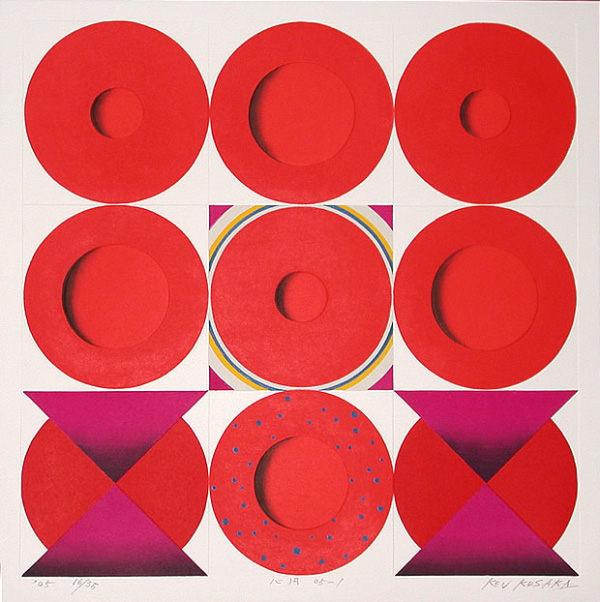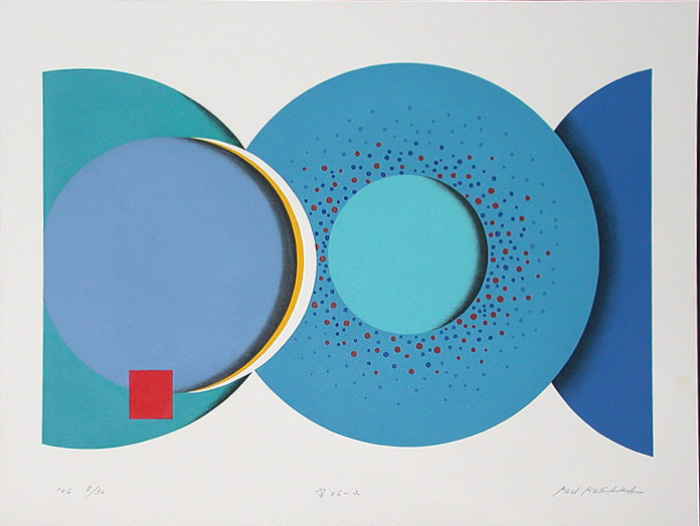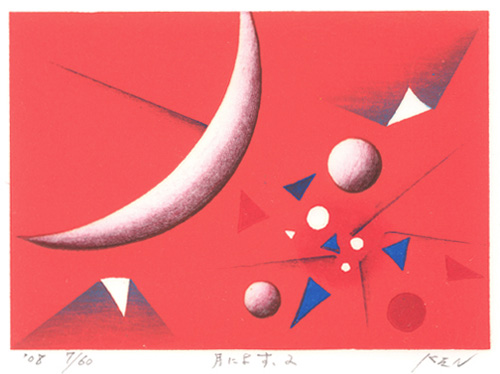Prints in Collection
Work (作品) 21, 1971
IHL Cat. #1605
| Work (作品) 28, 1971 IHL Cat. #1607 | IHL Cat. #1608 | IHL Cat. #341 |
| | Red Shadow 82-5, 1982 IHL Cat. #628 |  Red Memory, 1989 IHL Cat. #627 |
Biographical Data
Profile
Kusaka Kenji 日下賢二 (くさか けんじ) (sometimes seen as 日下賢司) (b. 1936)Sources: 44 Modern Japanese Print Artists, Gaston Petit, Kodansha International Ltd., 1973, p. 202-203; Who's Who in Modern Japanese Prints, Frances Blakemore, Weatherhill, 1975, p. 97; Modern Japanese Prints: 1912-1989, Lawrence Smith, British Museum Press, 1994, p. 29.
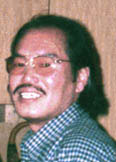 undated photo of artist The concept of my works is represented by a kind of the life force. Iam searching for my outlook on the universe, particularly by regardingthe clarification of colors and speed. | Kusaka Kenji was born on a farm in Tsuyama, Okayama Prefecture in 1936. At a young age he studied print making for five years with Nagare Koji (b. 1905), a member of the Nihon Hanga-in (Japanese Print Institute) and a student of Okada Saburosuke (1869-1939), who taught in Okayama. At some point, he also studied with Munakata Shiko (1903-1975).1 In 1952 Kusaka moved to Tokyo where he remained. In 1961 he received the Kokugakai Newcomer’s Award followed by numerous other awards and appearances in national and international exhibitions. In the early 1960s he produced the first of his continuing series Work. This series began with some reference to identifiable objects but quickly became more abstract and dynamic with use of intense primary colors. In 1966 he gained artistic prominence with the winning of the National Museum of Modern Art Award at the Tokyo international biennial. Starting around 1967 Kusaka introduced the circle form which subsequently morphed into an egg shape. This egg shape counter balanced his straight lines and angular corners. He also began to title some of his works, especially those concerned with his favorite concept of the horizon. By 1971 his egg shape became the dominant shape in his prints and the only identifiable object in his prints. In subsequent prints Kusaka returned to more geometric and less abstract forms, using elongated heart/valentine forms in some of his work in the late 1990s and 2000. Kusaka is a long-time member of the Nihon Hanga Kyōkai (Japanese Print Association.) |
“Kusaka’s work is never improvised, but is the patiently elaborated expression of a simple man. His technique is totally absorbed by the discipline necessary to produce prints of great ingenuity and directness.” 2 In his smooth technique and confident abstraction he resembles others of the first post-war generation of woodblock artists such as Kurosaki, Amano Kazumi and Amano Kunihiro.3
Kusaka’s work is represented in the collections of The British Museum, London; Library of Congress, Washington, D.C.; Tokyo Metropolitan Museum; Colorado State Museum of Modern Art, Denver; Kanagawa Prefectural Museum; Museum of Modern Art, New York; Fine Arts Museums of San Francisco; Cleveland Museum of Art; National Museum of Modern Art, Tokyo; Art Gallery of New South Wales; Los Angeles County Museum of Art; Museum of Fine Arts, Boston; Honolulu Museum of Art.
Post-2000 Work by the Artist - A Few Examples
Far in the Blue Distance, 2001
61.4 x 45.5 cm
17.2.1 x 17 cm
In the Air 06-02, 2006
47.5 x 62.5 cm誕生 [Creation], 2, 2008
21 x 15.4 cm
20.9 x 15.3 cm
1 website of Gallery Sobi Pallas www.sobi2pallas.jp/e-ge131.html
2 Contemporary Japanese Prints, Kawakita Michiaki, Kodansha International Ltd., 1967, p. 181.
3 Modern Japanese Prints: 1912-1989, Lawrence Smith, British Museum Press, 1994, p. 29.
3 Modern Japanese Prints: 1912-1989, Lawrence Smith, British Museum Press, 1994, p. 29.

